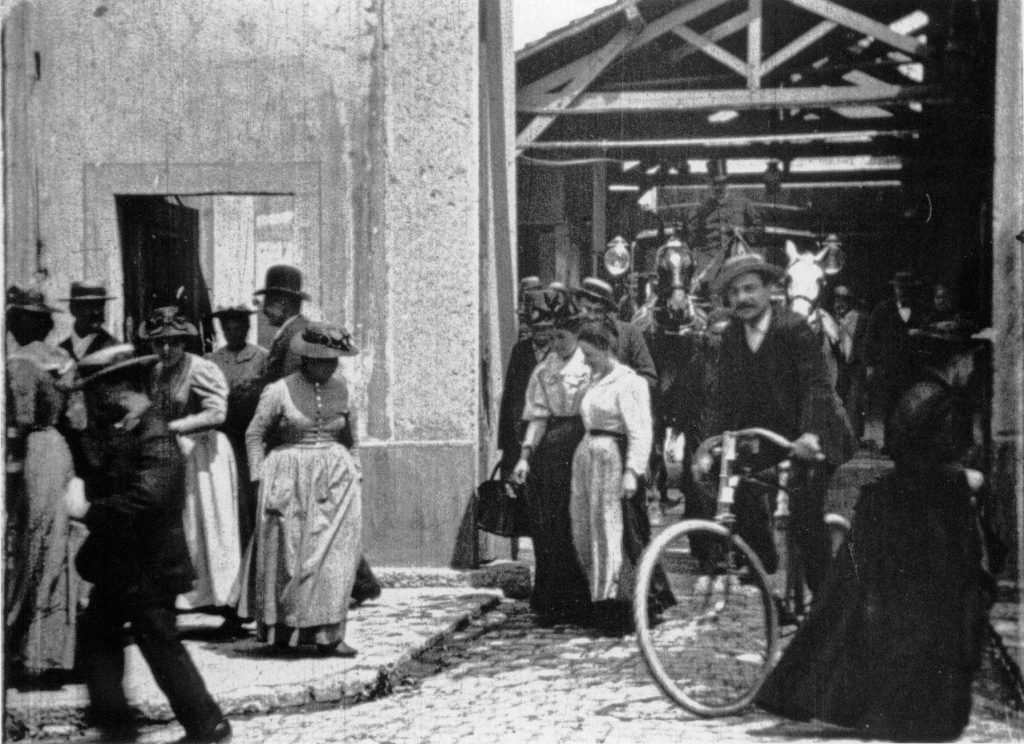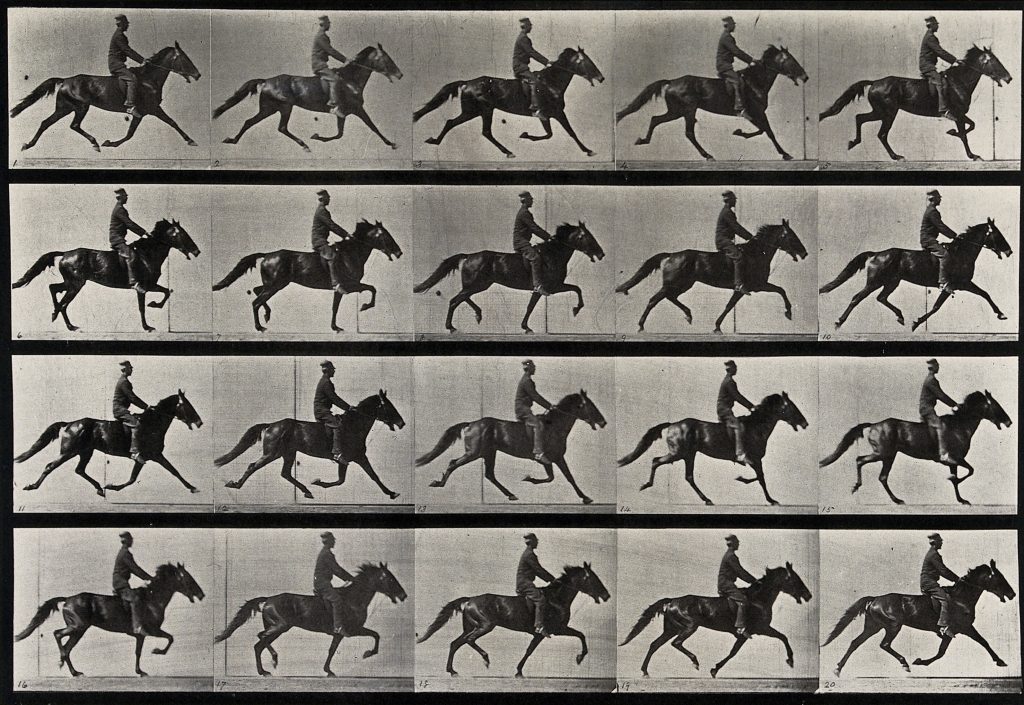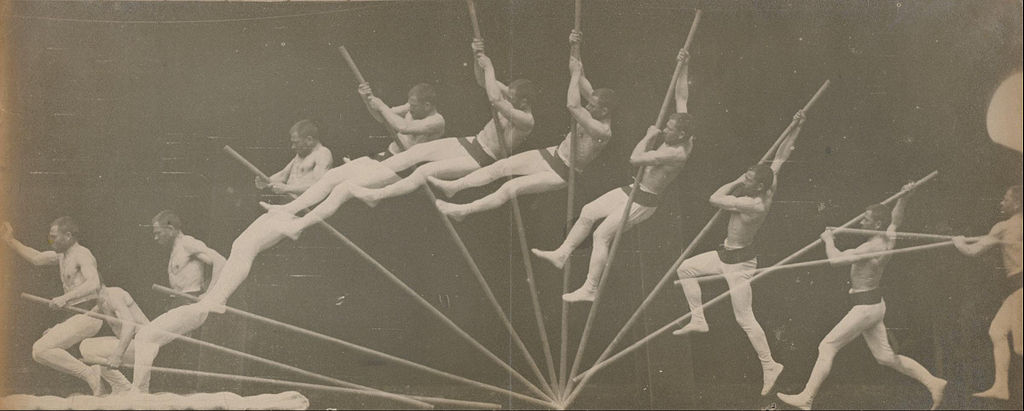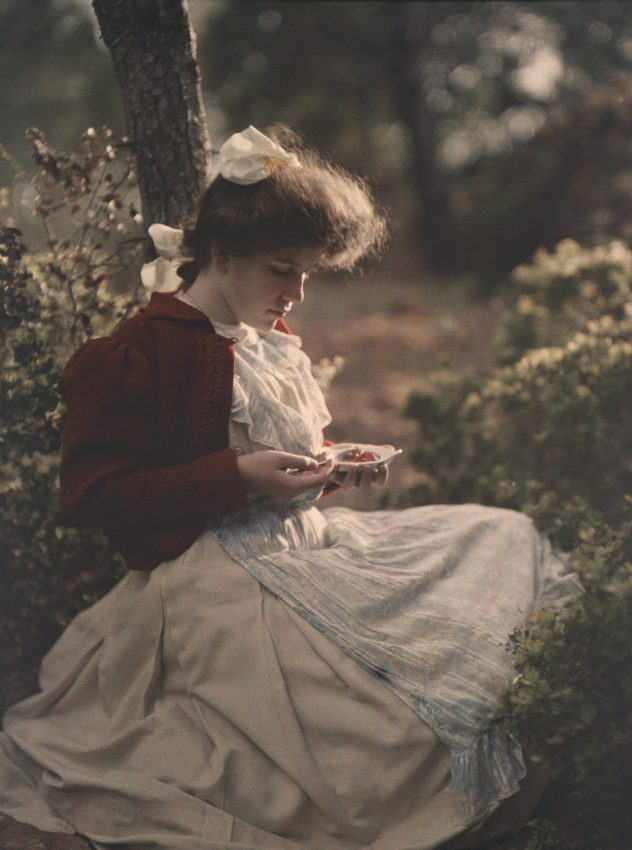by Claudia Stritof
_
Paris, 28 December 1895. At the Salon Indien, a secondary room of the Grand Café, the brothers Auguste and Louis Lumière screen their film Workers Leaving The Lumière Factory in Lyon.
If this date is conventionally mentioned to indicate the year in which the seventh art makes its official debut, in reality, there are many scientific discoveries that led to the birth of cinema.

The nineteenth century was a fervent period of experimentation, especially in the optical-chemical field, thanks also to the revolutionary discovery of photography in 1839; but in order for photographs to come alive, it was necessary to create devices that would allow images to be imprinted on the same support inserted in a sliding mechanism.
It was this way that, from the photographic revolver of the astronomer Pierre-Jules-César Janssen, we moved on to the later experiments of Étienne-Jules Marey and Eadweard Muybridge.
The photographer Eadweard Muybridge in the 1870s started a study on the locomotion of horses and, through the automatic electro-photograph, he obtained a series of chronophotographic images, with the speed of one-thousandth of a second, managing to capture the movement of a galloping horse. A discovery that came about thanks to a series of devices set in sequence and activated by the passage of the horse itself.
At the end of the decade, Muybridge conceives the zoopraxiscope, a first rudimentary projector, while in 1887 he published the famous Animal Locomotion, a visual atlas on human and animal movement.

Etienne-Jules Marey will then simplify the procedure with his photographic rifle, thanks to which he obtained synchronic deconstruction of the movement on a single plate, with a mechanism similar to that of the Janssen revolver.
It is natural to think of these devices as ancestors of cinema, but for the actual birth of “a new human species, that of homo cinematographicus” – to quote the scholar Gian Piero Brunetta – there was still a long way to go.

The experiments conducted by Thomas Alva Edison and his assistant William Dickson are important.
The two – inspired by Marey’s photographic rifle – built the kinetograph, an instrument capable of recording moving images, and the kinetoscope, a large wooden box in which it was possible to observe the images that were projected inside.
The films – lasting about forty seconds – were made by his assistants inside the historic Black Maria, the studio where the unforgettable Annabelle Serpentine Dance and The Irwing-Rice Kiss were shot, the latter famous for being the first kiss in cinema.
Edison’s kinetoscope fascinated Antoine Lumière, father of Louis and Auguste, and it was him who encouraged his sons to start experimenting with this new technology.

The company, which was based in Lyon, was specialized in the manufacture of photographic films and gained great notoriety in 1881 with the invention of photographic plates known by the name Étiquette bleue.
Charles Moisson, chief mechanic of the factory, created the prototype of the cinematograph, a tool that allowed both filming and projection of images; but to sanction the immediate success of the Lumières was the ease of transport and use of the new invention.
As scholar Louis Creton wrote, the Lumière family created “an ingenious technological synthesis, simple, reliable, multifunctional, easy to use and suitable for a commercial development strategy”.
In their Lyon factory they trained many operators who were sent to the most remote corners of the planet with the task of creating animated scenes: Charles Moisson, Francis Doublier, Félix Mesguich (accused of witchcraft in Russia due to the amazement that the film projections created in the spectators ) and – last but not least – Alexandre Promio (famous for having invented the “panoramic view” by shooting the city of Venice while he was on a moving boat), are just some of the famous names in the history of cinema.

Their father Antoine was firmly convinced of the importance of this discovery, but the brothers considered the cinema a pastime without a future, so they abandoned the creation of films to devote themselves to other researches in the photographic field, the only field they believed could have a lasting future.
From this moment on, energies will be used mainly for the discovery of color photography, autochromes, famous for their pastel shades and much loved by pictorial photography of the time; but the history of moving images was written by then and the magic of the cinema in a very short time conquered the whole world because, after all, as Alfred Hitchcock said, “a film is life with the boring bits cut out.”
Two short films made by Thomas Alva Edison’s assistants, William Dickson and William Heise. Annabelle serpentine dance (1891, the first hand-tinted movie) and The Irwing-Rice Kiss (1896):
November 10, 2020




